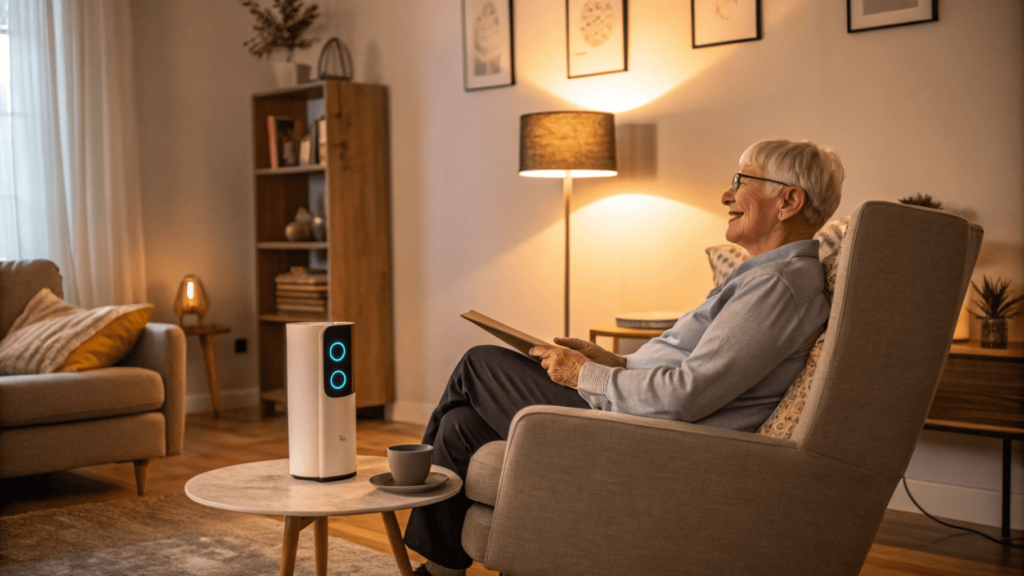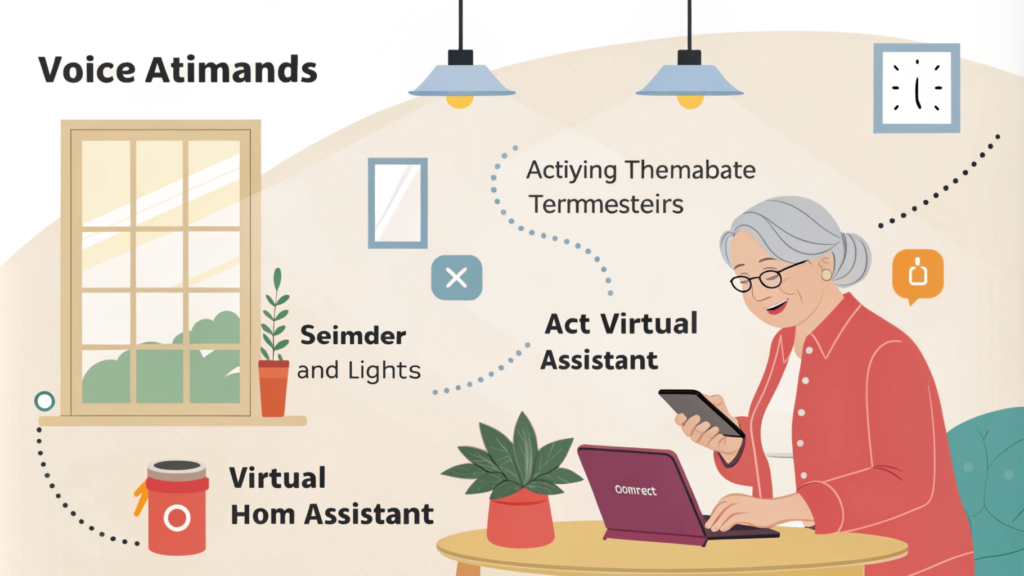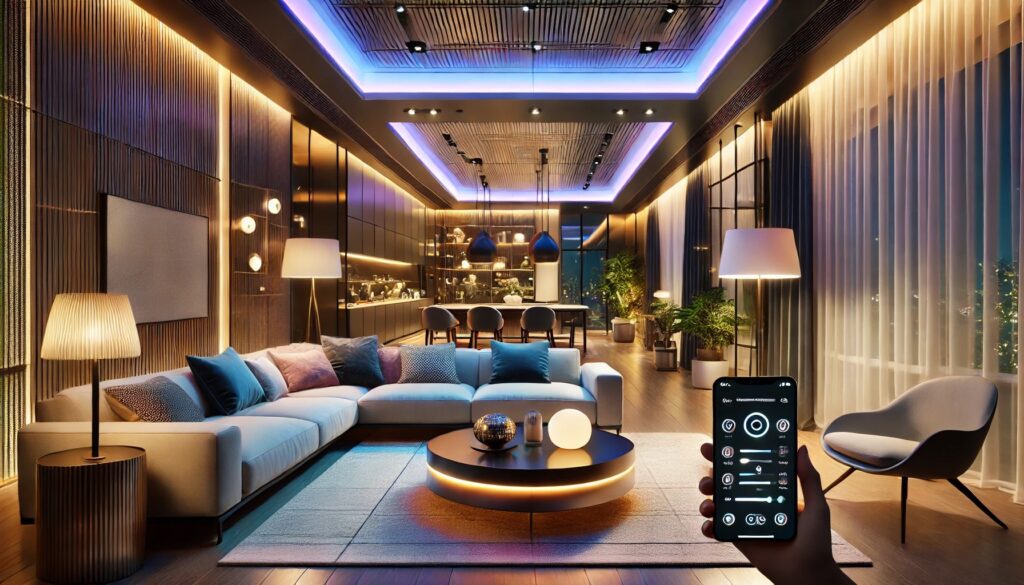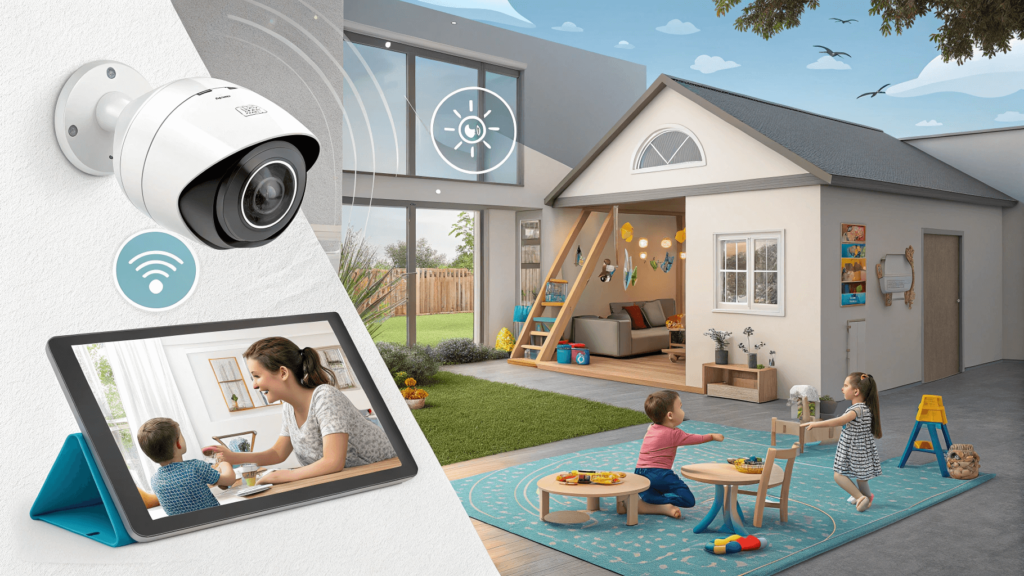Imagine waking up to gentle lighting that automatically brightens as you start your day, your coffee maker brewing your morning cup without pressing a button, and your medication reminder softly chiming right on schedule. This isn’t a scene from a sci-fi movie – it’s the reality of smart home technology for seniors today.
Understanding Smart Homes: More Than Just Gadgets
Remember when we thought automatic garage door openers were the height of home technology? Well, we’ve come a long way since then! A smart home is like having an invisible helper that anticipates your needs and makes daily tasks easier. For seniors and those with accessibility needs, this technology isn’t just convenient – it’s transformative.
What Exactly Is Smart Home Technology?
Think of a smart home as your house with a brain. According to recent research, it’s a living space equipped with devices that can be controlled remotely or automated to perform specific functions. From lighting and temperature to security and entertainment, these systems work together to create a more comfortable, safer, and more accessible living environment. They will also often make life easier and more convenient for seniors.
Why Smart Homes Make Sense for Seniors
Let’s be honest – aging in place comes with its challenges. But here’s where smart home technology shines:
- Enhanced Safety and Security:
- Motion-activated lighting prevents falls, by automatically illuminating areas that have been sensed by motion, which can help prevent nighttime falls. Consider using smart light systems such as Philips Hue or Wyze lighting systems, which have motion sensor capabilities.
- Smart doorbells with video let you see visitors before opening the door. Smart doorbells such as the Ring Doorbell or the Nest Doorbell have video capabilities that allow you to monitor visitors and also allow you to speak to them via the two-way audio, before opening the door.
- Emergency response systems that can call for help with just a voice command, that use voice-activated technology, or wearable devices such as the Lively Mobile Plus or the Medical Guardian, which have emergency call features built in, that can help you call for help in case of an emergency.
- Improved Independence:
- Voice-controlled everything (seriously, everything!), via voice-activated, assistants such as the Amazon Echo or the Google Nest, which will allow you to control lights, locks, thermostats and other smart devices around your home.
- Automated medication reminders such as Hero or MedMinder, will help remind you when it’s time to take your medications, and can also alert a designated caregiver if a dose is missed.
- Smart appliances that shut off automatically, can help prevent accidents in the kitchen, and will also save money on energy bills. Many brands such as Whirlpool, and Samsung, offer a variety of smart appliances that are energy efficient, and also offer auto shut off features.
- Better Connected Living:
- Easy video calls with family using devices such as the Facebook Portal or the Google Nest Hub Max, that make it easy to make video calls with family and friends, which will help seniors feel more connected.
- Remote monitoring for caregivers through apps such as CareLinx or the Canary View Security Camera, that can help you stay up to date with the daily needs of your senior. These services allow caregivers to monitor the activity, and provide timely support.
- Social engagement through virtual assistants, by using smart speakers such as the Google Nest or the Amazon Echo, which can be used to play podcasts and music. They can also be used to help call friends or family, and help create a better sense of engagement.

Getting Started: Your Smart Home Journey
“But isn’t this all too complicated?” I hear you asking. According to Google’s smart home experts, it’s easier than you might think. Let’s break it down into manageable steps:
Step 1: Start Small and Simple
Remember the old saying about eating an elephant one bite at a time? The same applies here. Begin with these basics:
- A smart speaker (like Amazon Echo or Google Nest) that allows for hands free control, is affordable, and offers many useful benefits.
- Smart plugs for existing lamps, that can be used to control your existing lighting via your smartphone or by using voice commands.
- A video doorbell such as the Ring Video Doorbell, which will help you improve the security of your home.
Step 2: Focus on Essential Areas
Think about your daily routine. Where could you use the most help? Common starting points include:
| Area | Smart Solution | Benefit |
| Lighting | Motion sensors & smart bulbs | Prevent falls, save energy |
| Security | Video doorbell & smart locks | See visitors, remote access |
| Kitchen | Smart appliances & sensors | Cooking safety, reminders |
| Bedroom | Smart mattress & lighting | Sleep tracking, gentle wake-up |
Making Your Smart Home Work for You
According to accessibility experts, voice control is one of the most significant advances in smart home technology. Imagine being able to:
- Turn lights on/off without reaching for switches, by using a voice controlled smart light, or a smart speaker.
- Adjust the thermostat from your favorite chair, using a smart thermostat such as the Nest or the Ecobee thermostat.
- Call for help in an emergency, by using a smart speaker that has emergency call capabilities.
- Set reminders for medications, by using smart medication dispensers such as the Hero or the Medminder.

Accessibility Features That Matter
Smart home technology isn’t just about convenience; it’s about creating an environment that adapts to your needs:
- Visual Accessibility:
- Automated lighting adjustments such as automated dimming, brightness control and color temperature changes, that can be done with smart lighting.
- Voice-announced notifications, can be done through devices such as smart speakers or smart displays, that use text-to-speech technology to announce notifications.
- High-contrast displays on control panels are available from a variety of devices such as smart thermostats, and smart displays. Be sure to purchase devices that are designed with accessibility in mind, which often have large icons and adjustable brightness.
- Physical Accessibility:
- Remote controls for everything, through your smartphone or via smart speakers, that will control everything from lights, to thermostats, to even appliances.
- Automated door openers that are activated via a remote, or a voice command, which will provide much more independence. Be sure to purchase a device that can easily be installed, and is reliable.
- Motion-activated functions, such as hands free faucets, or motion activated lighting, that will allow you to perform simple tasks more easily.
Keeping Your Smart Home Secure
Security concerns shouldn’t hold you back from embracing smart technology. Here’s how to stay safe:
- Strong Passwords:
- Use unique passwords for each device, to avoid your smart devices from being compromised.
- Consider a password manager to help you generate and store passwords, such as LastPass, or Dashlane.
- Regular Updates:
- Keep all devices updated with the latest software updates.
- Enable automatic updates when possible, to ensure that your devices are updated at all times, and that they are protected from the newest threats.
- Network Security:
- Use a separate network for smart devices, to avoid your main network from being compromised.
- Enable two-factor authentication whenever available, to add an extra layer of security to your smart home system.
Cost-Effective Smart Home Solutions
You don’t need to break the bank to make your home smarter. Here’s a budget-friendly approach:
| Priority Level | Devices | Estimated Cost |
| Essential | Smart speaker, video doorbell, smart plugs | $150-300 |
| Important | Smart thermostat, lighting system | $200-400 |
| Nice to Have | Smart appliances, advanced security | $500+ |
- The “Essential” category, often includes basic safety and convenience features, such as the Amazon Echo Dot, Ring Video Doorbell Wired, and the Amazon Basic Smart Plug.
- The “Important” category, often includes items that will help to create a more functional and comfortable environment, such as a Google Nest Thermostat and the Wyze Bulbs.
- The “Nice to Have” category, includes items that are considered to be high end, and often have many advanced features, such as smart refrigerators, high-end cameras and smart locks.
The Future Is Now: Success Stories
I recently helped my aunt set up her smart home system. She was skeptical at first, but now she can’t imagine life without it. Her favorite feature? The smart medication dispenser that reminds her when it’s time to take her pills and automatically alerts me if she misses a dose. I know she is safe and healthy, and she now also feels more independent.
Conclusion: Taking the First Step
Smart home technology isn’t just about keeping up with the times – it’s about creating a living space that supports independence, safety, and quality of life. Whether you’re looking to age in place or make your home more accessible, there’s a smart solution waiting for you.
Ready to get started? Begin with one device that addresses your most pressing need. Remember, every smart home journey starts with a single smart device!
[Call to Action] Want to learn more about specific smart home solutions for your needs? Leave a comment below or sign up for our newsletter for weekly tips and updates on the latest smart home technology for seniors.



